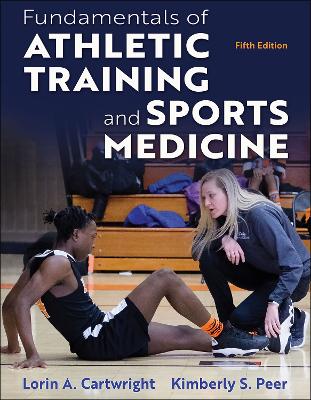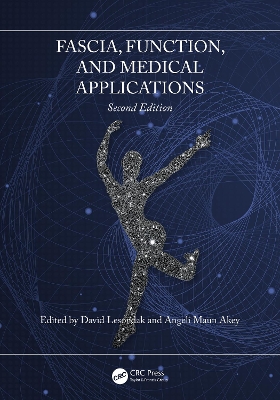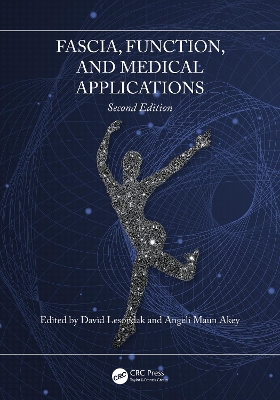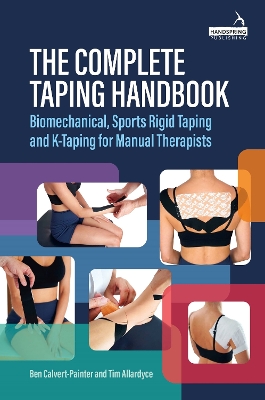Fundamentals of Athletic Training and Sports Medicine
 portes grátis
portes grátis
Fundamentals of Athletic Training and Sports Medicine
Cartwright, Lorin A.; Peer, Kimberly S.
Human Kinetics Publishers
12/2024
608
Dura
9781718215887
15 a 20 dias
Descrição não disponível.
List of Anatomical Drawings
Unit I. Introduction to Sports Medicine and Athletic Training
Chapter 1. Athletic Training as a Profession
Roles of the Athletic Trainer
The Sports Medicine Team
Becoming a Certified Athletic Trainer
Athletic Training Careers
National Athletic Trainers' Association
Life-Work Balance
Summary
Chapter 2. Administration and Professional Development
Legal Issues
Avoiding Legal Problems
Insurance
Professional Development and Continuing Education
Summary
Chapter 3. Design and Development of the Athletic Training Facility
Facility Design and Development
Safety Factors and Planning Issues
Maintenance of Facility and Modalities
Material Safety Data Sheets
Facility Rules
Summary
Chapter 4. Documentation and Record Keeping
Medical Terminology Basics
Medical Documentation Notes
Documentation and Record Keeping
Patient Confidentiality
Summary
Chapter 5. Fiscal Management
Types of Budgets
Designing a Budget
Purchasing
Inventory Management
Insurance and Reimbursement
Summary
Chapter 6. The Preparticipation Physical Exam
Preparticipation Format and Parts
Medical Information Forms
Clearance for Participation in Sport
Summary
Unit II. Basics of Human Anatomy and Physiology
Chapter 7. Introduction to Anatomy
Anatomical Position
Body Tissues
Classification of Joints
Muscle Movement
Summary
Chapter 8. Basics of Tissue Injuries
Soft-Tissue Injuries
Bone Injuries
Diagnostic Testing for Soft-Tissue and Bone Injuries
Summary
Unit III. Athletic-Related Injuries to the Head, Spine, and Axial Region
Chapter 9. Head Injuries
Anatomy of the Head
Preventing Head Injuries
Head Injury Mechanisms
Treating Head Injuries
Summary
Chapter 10. Facial Injuries
Anatomy of the Facial Region
Preventing Facial Injuries
Treating Eye Injuries and Conditions
Treating Ear Injuries
Treating Nose Injuries
Treating Mouth Injuries
Summary
Chapter 11. Throat and Thorax Injuries
Anatomy of the Throat
Anatomy of the Thorax
Preventing Throat and Thorax Injuries
Treating Throat Injuries and Conditions
Treating Thorax Injuries and Conditions
Summary
Chapter 12. Abdominal Injuries
Anatomy of the Abdomen
Preventing Abdominal Injuries
Treating Abdominal Injuries and Conditions
Summary
Chapter 13. Genitourinary and Gynecological Injuries and Conditions
Genitourinary Anatomy
Injuries and Conditions to the Female Reproductive Systems
Injuries and Conditions to the Male Reproductive Systems
Sexually Transmitted Infections
Summary
Chapter 14. Spinal Injuries
Anatomy of the Spine
Postural Considerations
Preventing Spinal Injuries
Treating Lumbar Spine Injuries and Conditions
Treating Cervical Spine Injuries and Conditions
Summary
Unit IV. Athletic-Related Injuries to the Upper Extremity
Chapter 15. Shoulder Injuries
Anatomy of the Shoulder
Preventing Shoulder Injuries
Treating Shoulder Injuries
Muscle, Bursa, and Tendon Injuries
Ligament and Joint Injuries
Summary
Chapter 16. Elbow Injuries
Anatomy of the Elbow
Preventing Elbow Injuries
Treating Elbow Injuries and Conditions
Summary
Chapter 17. Wrist and Hand Injuries
Anatomy of the Wrist and Hand
Preventing Wrist and Hand Injuries
Treating Wrist and Hand Injuries and Conditions
Summary
Unit V. Athletic-Related Injuries to the Lower Extremity
Chapter 18. Hip, Pelvis, and Thigh Injuries
Anatomy of the Hip, Pelvis, and Thigh
Preventing Hip, Pelvis, and Thigh Injuries
Treating Hip, Pelvis, and Thigh Injuries and Conditions
Summary
Chapter 19. Knee Injuries
Anatomy of the Knee
Preventing Knee Injuries
Treating Knee Injuries and Conditions
Summary
Chapter 20. Foot, Ankle, and Lower-Leg Injuries
Anatomy of the Foot, Ankle, and Lower Leg
Preventing Foot, Ankle, and Lower-Leg Injuries
Treating Foot, Ankle, and Lower-Leg Injuries and Conditions
Summary
Unit VI. Rehabilitation and Reconditioning of Athletic Injuries
Chapter 21. Patient Assessment and Treatment Methods
Assessing the Athlete and Documenting the Findings
Phases of Treatment
Therapeutic Modalities
Summary
Chapter 22. Reconditioning Programs
Strength and Conditioning Principles
Types of Muscle Actions
Muscular Development Programs
Stretching to Improve Joint Flexibility
Exercises for Reconditioning Muscles
Cardiorespiratory Conditioning
Neurological Reconditioning
A Word on Safety
Summary
Chapter 23. Psychosocial Aspects of Athletic Training
Mental Health Risk Indicators
Referring an Athlete for Professional Help
Relationship Building
Practical Suggestions
Summary
Unit VII. Providing Emergency Care
Chapter 24. Planning for Emergencies
Medical Emergency Cards
The Emergency Action Plan
Practicing the Emergency Action Plan
Pandemic Management Plan
Summary
Chapter 25. Primary and Secondary Emergency Procedures
Primary Assessment
Breathing Emergencies
Cardiopulmonary Emergencies
Hemorrhage
Preventing Communicable Disease Transmission
Secondary Assessment
HIT
Specific Conditions
PRICES Method
Summary
Chapter 26. Environmental Situations and Injuries
Heat-Related Problems
Cold-Related Problems
Severe Weather
Bites and Stings
Summary
Chapter 27. Stabilization and Transportation of Injured Athletes
Equipment Removal
Lifting and Moving an Athlete
Summary
Unit VIII. Injury Prevention and Diagnostic Testing
Chapter 28. Protective Taping, Wrapping, Bandaging, and Casting
Principles of Taping
Taping Techniques
Elastic Wrapping Techniques
Bandages and Their Use
Casting
Summary
Chapter 29. Protective Equipment and Durable Medical Equipment Used in Athletics
Protective Equipment for the Head and Face
Protective Equipment for the Upper Body
Protective Equipment for the Lower Body
Durable Medical Equipment
Summary
Chapter 30. Basic Diagnostic Imaging and Testing
X-Rays
Bone Scans
CT Scans
MRI
Ultrasound
DEXA Scans
PET Scans
Blood Testing
Summary
Unit IX. Other Athletic Conditions and Concerns
Chapter 31. Systemic Conditions
Respiratory Conditions
Vascular Conditions
Lymphatic Conditions
Immune System Conditions
Gastrointestinal Conditions
Diabetes
Epilepsy
Arthritis
Thyroid Disorders
Female Athlete Triad
Rhabdomyolysis
Summary
Chapter 32. Communicable Conditions and Dermatological Conditions
Defending Against Microorganisms
Dermatological Conditions
Blood-Borne Conditions
Summary
Chapter 33. Common Drugs Used in Athletics
Drug Administration
Drug Approval Process
Therapeutic Drug Effects
Purchasing Therapeutic Drugs
Therapeutic Drugs
Recreational Drugs
Performance-Enhancing Drugs
Drug Testing
Over-the-Counter (OTC) Drugs
Drug Abuse
Safety in Distribution of Medications
Proper Disposal of Medications
Summary
Chapter 34. Nutrition and Weight Management
Major Nutrients
Healthy Diet
Understanding Food Nutrition Labels
Caloric Balance
Sport Nutrition
Popular Diets/Fads
Popular Nutritional Supplements
Summary
Chapter 35. Special Populations
History of Disabled Sport
Musculoskeletal Conditions
Auditory and Visual Impairments
Cardiovascular Disorders
Transplants
Neuromuscular Disorders
Cognitive Conditions
Female Conditions
Assessing Participation Conditions
Common Injuries
Summary
Unit I. Introduction to Sports Medicine and Athletic Training
Chapter 1. Athletic Training as a Profession
Roles of the Athletic Trainer
The Sports Medicine Team
Becoming a Certified Athletic Trainer
Athletic Training Careers
National Athletic Trainers' Association
Life-Work Balance
Summary
Chapter 2. Administration and Professional Development
Legal Issues
Avoiding Legal Problems
Insurance
Professional Development and Continuing Education
Summary
Chapter 3. Design and Development of the Athletic Training Facility
Facility Design and Development
Safety Factors and Planning Issues
Maintenance of Facility and Modalities
Material Safety Data Sheets
Facility Rules
Summary
Chapter 4. Documentation and Record Keeping
Medical Terminology Basics
Medical Documentation Notes
Documentation and Record Keeping
Patient Confidentiality
Summary
Chapter 5. Fiscal Management
Types of Budgets
Designing a Budget
Purchasing
Inventory Management
Insurance and Reimbursement
Summary
Chapter 6. The Preparticipation Physical Exam
Preparticipation Format and Parts
Medical Information Forms
Clearance for Participation in Sport
Summary
Unit II. Basics of Human Anatomy and Physiology
Chapter 7. Introduction to Anatomy
Anatomical Position
Body Tissues
Classification of Joints
Muscle Movement
Summary
Chapter 8. Basics of Tissue Injuries
Soft-Tissue Injuries
Bone Injuries
Diagnostic Testing for Soft-Tissue and Bone Injuries
Summary
Unit III. Athletic-Related Injuries to the Head, Spine, and Axial Region
Chapter 9. Head Injuries
Anatomy of the Head
Preventing Head Injuries
Head Injury Mechanisms
Treating Head Injuries
Summary
Chapter 10. Facial Injuries
Anatomy of the Facial Region
Preventing Facial Injuries
Treating Eye Injuries and Conditions
Treating Ear Injuries
Treating Nose Injuries
Treating Mouth Injuries
Summary
Chapter 11. Throat and Thorax Injuries
Anatomy of the Throat
Anatomy of the Thorax
Preventing Throat and Thorax Injuries
Treating Throat Injuries and Conditions
Treating Thorax Injuries and Conditions
Summary
Chapter 12. Abdominal Injuries
Anatomy of the Abdomen
Preventing Abdominal Injuries
Treating Abdominal Injuries and Conditions
Summary
Chapter 13. Genitourinary and Gynecological Injuries and Conditions
Genitourinary Anatomy
Injuries and Conditions to the Female Reproductive Systems
Injuries and Conditions to the Male Reproductive Systems
Sexually Transmitted Infections
Summary
Chapter 14. Spinal Injuries
Anatomy of the Spine
Postural Considerations
Preventing Spinal Injuries
Treating Lumbar Spine Injuries and Conditions
Treating Cervical Spine Injuries and Conditions
Summary
Unit IV. Athletic-Related Injuries to the Upper Extremity
Chapter 15. Shoulder Injuries
Anatomy of the Shoulder
Preventing Shoulder Injuries
Treating Shoulder Injuries
Muscle, Bursa, and Tendon Injuries
Ligament and Joint Injuries
Summary
Chapter 16. Elbow Injuries
Anatomy of the Elbow
Preventing Elbow Injuries
Treating Elbow Injuries and Conditions
Summary
Chapter 17. Wrist and Hand Injuries
Anatomy of the Wrist and Hand
Preventing Wrist and Hand Injuries
Treating Wrist and Hand Injuries and Conditions
Summary
Unit V. Athletic-Related Injuries to the Lower Extremity
Chapter 18. Hip, Pelvis, and Thigh Injuries
Anatomy of the Hip, Pelvis, and Thigh
Preventing Hip, Pelvis, and Thigh Injuries
Treating Hip, Pelvis, and Thigh Injuries and Conditions
Summary
Chapter 19. Knee Injuries
Anatomy of the Knee
Preventing Knee Injuries
Treating Knee Injuries and Conditions
Summary
Chapter 20. Foot, Ankle, and Lower-Leg Injuries
Anatomy of the Foot, Ankle, and Lower Leg
Preventing Foot, Ankle, and Lower-Leg Injuries
Treating Foot, Ankle, and Lower-Leg Injuries and Conditions
Summary
Unit VI. Rehabilitation and Reconditioning of Athletic Injuries
Chapter 21. Patient Assessment and Treatment Methods
Assessing the Athlete and Documenting the Findings
Phases of Treatment
Therapeutic Modalities
Summary
Chapter 22. Reconditioning Programs
Strength and Conditioning Principles
Types of Muscle Actions
Muscular Development Programs
Stretching to Improve Joint Flexibility
Exercises for Reconditioning Muscles
Cardiorespiratory Conditioning
Neurological Reconditioning
A Word on Safety
Summary
Chapter 23. Psychosocial Aspects of Athletic Training
Mental Health Risk Indicators
Referring an Athlete for Professional Help
Relationship Building
Practical Suggestions
Summary
Unit VII. Providing Emergency Care
Chapter 24. Planning for Emergencies
Medical Emergency Cards
The Emergency Action Plan
Practicing the Emergency Action Plan
Pandemic Management Plan
Summary
Chapter 25. Primary and Secondary Emergency Procedures
Primary Assessment
Breathing Emergencies
Cardiopulmonary Emergencies
Hemorrhage
Preventing Communicable Disease Transmission
Secondary Assessment
HIT
Specific Conditions
PRICES Method
Summary
Chapter 26. Environmental Situations and Injuries
Heat-Related Problems
Cold-Related Problems
Severe Weather
Bites and Stings
Summary
Chapter 27. Stabilization and Transportation of Injured Athletes
Equipment Removal
Lifting and Moving an Athlete
Summary
Unit VIII. Injury Prevention and Diagnostic Testing
Chapter 28. Protective Taping, Wrapping, Bandaging, and Casting
Principles of Taping
Taping Techniques
Elastic Wrapping Techniques
Bandages and Their Use
Casting
Summary
Chapter 29. Protective Equipment and Durable Medical Equipment Used in Athletics
Protective Equipment for the Head and Face
Protective Equipment for the Upper Body
Protective Equipment for the Lower Body
Durable Medical Equipment
Summary
Chapter 30. Basic Diagnostic Imaging and Testing
X-Rays
Bone Scans
CT Scans
MRI
Ultrasound
DEXA Scans
PET Scans
Blood Testing
Summary
Unit IX. Other Athletic Conditions and Concerns
Chapter 31. Systemic Conditions
Respiratory Conditions
Vascular Conditions
Lymphatic Conditions
Immune System Conditions
Gastrointestinal Conditions
Diabetes
Epilepsy
Arthritis
Thyroid Disorders
Female Athlete Triad
Rhabdomyolysis
Summary
Chapter 32. Communicable Conditions and Dermatological Conditions
Defending Against Microorganisms
Dermatological Conditions
Blood-Borne Conditions
Summary
Chapter 33. Common Drugs Used in Athletics
Drug Administration
Drug Approval Process
Therapeutic Drug Effects
Purchasing Therapeutic Drugs
Therapeutic Drugs
Recreational Drugs
Performance-Enhancing Drugs
Drug Testing
Over-the-Counter (OTC) Drugs
Drug Abuse
Safety in Distribution of Medications
Proper Disposal of Medications
Summary
Chapter 34. Nutrition and Weight Management
Major Nutrients
Healthy Diet
Understanding Food Nutrition Labels
Caloric Balance
Sport Nutrition
Popular Diets/Fads
Popular Nutritional Supplements
Summary
Chapter 35. Special Populations
History of Disabled Sport
Musculoskeletal Conditions
Auditory and Visual Impairments
Cardiovascular Disorders
Transplants
Neuromuscular Disorders
Cognitive Conditions
Female Conditions
Assessing Participation Conditions
Common Injuries
Summary
Este título pertence ao(s) assunto(s) indicados(s). Para ver outros títulos clique no assunto desejado.
Sports medicine; athletic training; career; profession; common injuries; illness; treatment; rehabilitation; NATA; prevention; return to play; care; modalities; certification; administration
List of Anatomical Drawings
Unit I. Introduction to Sports Medicine and Athletic Training
Chapter 1. Athletic Training as a Profession
Roles of the Athletic Trainer
The Sports Medicine Team
Becoming a Certified Athletic Trainer
Athletic Training Careers
National Athletic Trainers' Association
Life-Work Balance
Summary
Chapter 2. Administration and Professional Development
Legal Issues
Avoiding Legal Problems
Insurance
Professional Development and Continuing Education
Summary
Chapter 3. Design and Development of the Athletic Training Facility
Facility Design and Development
Safety Factors and Planning Issues
Maintenance of Facility and Modalities
Material Safety Data Sheets
Facility Rules
Summary
Chapter 4. Documentation and Record Keeping
Medical Terminology Basics
Medical Documentation Notes
Documentation and Record Keeping
Patient Confidentiality
Summary
Chapter 5. Fiscal Management
Types of Budgets
Designing a Budget
Purchasing
Inventory Management
Insurance and Reimbursement
Summary
Chapter 6. The Preparticipation Physical Exam
Preparticipation Format and Parts
Medical Information Forms
Clearance for Participation in Sport
Summary
Unit II. Basics of Human Anatomy and Physiology
Chapter 7. Introduction to Anatomy
Anatomical Position
Body Tissues
Classification of Joints
Muscle Movement
Summary
Chapter 8. Basics of Tissue Injuries
Soft-Tissue Injuries
Bone Injuries
Diagnostic Testing for Soft-Tissue and Bone Injuries
Summary
Unit III. Athletic-Related Injuries to the Head, Spine, and Axial Region
Chapter 9. Head Injuries
Anatomy of the Head
Preventing Head Injuries
Head Injury Mechanisms
Treating Head Injuries
Summary
Chapter 10. Facial Injuries
Anatomy of the Facial Region
Preventing Facial Injuries
Treating Eye Injuries and Conditions
Treating Ear Injuries
Treating Nose Injuries
Treating Mouth Injuries
Summary
Chapter 11. Throat and Thorax Injuries
Anatomy of the Throat
Anatomy of the Thorax
Preventing Throat and Thorax Injuries
Treating Throat Injuries and Conditions
Treating Thorax Injuries and Conditions
Summary
Chapter 12. Abdominal Injuries
Anatomy of the Abdomen
Preventing Abdominal Injuries
Treating Abdominal Injuries and Conditions
Summary
Chapter 13. Genitourinary and Gynecological Injuries and Conditions
Genitourinary Anatomy
Injuries and Conditions to the Female Reproductive Systems
Injuries and Conditions to the Male Reproductive Systems
Sexually Transmitted Infections
Summary
Chapter 14. Spinal Injuries
Anatomy of the Spine
Postural Considerations
Preventing Spinal Injuries
Treating Lumbar Spine Injuries and Conditions
Treating Cervical Spine Injuries and Conditions
Summary
Unit IV. Athletic-Related Injuries to the Upper Extremity
Chapter 15. Shoulder Injuries
Anatomy of the Shoulder
Preventing Shoulder Injuries
Treating Shoulder Injuries
Muscle, Bursa, and Tendon Injuries
Ligament and Joint Injuries
Summary
Chapter 16. Elbow Injuries
Anatomy of the Elbow
Preventing Elbow Injuries
Treating Elbow Injuries and Conditions
Summary
Chapter 17. Wrist and Hand Injuries
Anatomy of the Wrist and Hand
Preventing Wrist and Hand Injuries
Treating Wrist and Hand Injuries and Conditions
Summary
Unit V. Athletic-Related Injuries to the Lower Extremity
Chapter 18. Hip, Pelvis, and Thigh Injuries
Anatomy of the Hip, Pelvis, and Thigh
Preventing Hip, Pelvis, and Thigh Injuries
Treating Hip, Pelvis, and Thigh Injuries and Conditions
Summary
Chapter 19. Knee Injuries
Anatomy of the Knee
Preventing Knee Injuries
Treating Knee Injuries and Conditions
Summary
Chapter 20. Foot, Ankle, and Lower-Leg Injuries
Anatomy of the Foot, Ankle, and Lower Leg
Preventing Foot, Ankle, and Lower-Leg Injuries
Treating Foot, Ankle, and Lower-Leg Injuries and Conditions
Summary
Unit VI. Rehabilitation and Reconditioning of Athletic Injuries
Chapter 21. Patient Assessment and Treatment Methods
Assessing the Athlete and Documenting the Findings
Phases of Treatment
Therapeutic Modalities
Summary
Chapter 22. Reconditioning Programs
Strength and Conditioning Principles
Types of Muscle Actions
Muscular Development Programs
Stretching to Improve Joint Flexibility
Exercises for Reconditioning Muscles
Cardiorespiratory Conditioning
Neurological Reconditioning
A Word on Safety
Summary
Chapter 23. Psychosocial Aspects of Athletic Training
Mental Health Risk Indicators
Referring an Athlete for Professional Help
Relationship Building
Practical Suggestions
Summary
Unit VII. Providing Emergency Care
Chapter 24. Planning for Emergencies
Medical Emergency Cards
The Emergency Action Plan
Practicing the Emergency Action Plan
Pandemic Management Plan
Summary
Chapter 25. Primary and Secondary Emergency Procedures
Primary Assessment
Breathing Emergencies
Cardiopulmonary Emergencies
Hemorrhage
Preventing Communicable Disease Transmission
Secondary Assessment
HIT
Specific Conditions
PRICES Method
Summary
Chapter 26. Environmental Situations and Injuries
Heat-Related Problems
Cold-Related Problems
Severe Weather
Bites and Stings
Summary
Chapter 27. Stabilization and Transportation of Injured Athletes
Equipment Removal
Lifting and Moving an Athlete
Summary
Unit VIII. Injury Prevention and Diagnostic Testing
Chapter 28. Protective Taping, Wrapping, Bandaging, and Casting
Principles of Taping
Taping Techniques
Elastic Wrapping Techniques
Bandages and Their Use
Casting
Summary
Chapter 29. Protective Equipment and Durable Medical Equipment Used in Athletics
Protective Equipment for the Head and Face
Protective Equipment for the Upper Body
Protective Equipment for the Lower Body
Durable Medical Equipment
Summary
Chapter 30. Basic Diagnostic Imaging and Testing
X-Rays
Bone Scans
CT Scans
MRI
Ultrasound
DEXA Scans
PET Scans
Blood Testing
Summary
Unit IX. Other Athletic Conditions and Concerns
Chapter 31. Systemic Conditions
Respiratory Conditions
Vascular Conditions
Lymphatic Conditions
Immune System Conditions
Gastrointestinal Conditions
Diabetes
Epilepsy
Arthritis
Thyroid Disorders
Female Athlete Triad
Rhabdomyolysis
Summary
Chapter 32. Communicable Conditions and Dermatological Conditions
Defending Against Microorganisms
Dermatological Conditions
Blood-Borne Conditions
Summary
Chapter 33. Common Drugs Used in Athletics
Drug Administration
Drug Approval Process
Therapeutic Drug Effects
Purchasing Therapeutic Drugs
Therapeutic Drugs
Recreational Drugs
Performance-Enhancing Drugs
Drug Testing
Over-the-Counter (OTC) Drugs
Drug Abuse
Safety in Distribution of Medications
Proper Disposal of Medications
Summary
Chapter 34. Nutrition and Weight Management
Major Nutrients
Healthy Diet
Understanding Food Nutrition Labels
Caloric Balance
Sport Nutrition
Popular Diets/Fads
Popular Nutritional Supplements
Summary
Chapter 35. Special Populations
History of Disabled Sport
Musculoskeletal Conditions
Auditory and Visual Impairments
Cardiovascular Disorders
Transplants
Neuromuscular Disorders
Cognitive Conditions
Female Conditions
Assessing Participation Conditions
Common Injuries
Summary
Unit I. Introduction to Sports Medicine and Athletic Training
Chapter 1. Athletic Training as a Profession
Roles of the Athletic Trainer
The Sports Medicine Team
Becoming a Certified Athletic Trainer
Athletic Training Careers
National Athletic Trainers' Association
Life-Work Balance
Summary
Chapter 2. Administration and Professional Development
Legal Issues
Avoiding Legal Problems
Insurance
Professional Development and Continuing Education
Summary
Chapter 3. Design and Development of the Athletic Training Facility
Facility Design and Development
Safety Factors and Planning Issues
Maintenance of Facility and Modalities
Material Safety Data Sheets
Facility Rules
Summary
Chapter 4. Documentation and Record Keeping
Medical Terminology Basics
Medical Documentation Notes
Documentation and Record Keeping
Patient Confidentiality
Summary
Chapter 5. Fiscal Management
Types of Budgets
Designing a Budget
Purchasing
Inventory Management
Insurance and Reimbursement
Summary
Chapter 6. The Preparticipation Physical Exam
Preparticipation Format and Parts
Medical Information Forms
Clearance for Participation in Sport
Summary
Unit II. Basics of Human Anatomy and Physiology
Chapter 7. Introduction to Anatomy
Anatomical Position
Body Tissues
Classification of Joints
Muscle Movement
Summary
Chapter 8. Basics of Tissue Injuries
Soft-Tissue Injuries
Bone Injuries
Diagnostic Testing for Soft-Tissue and Bone Injuries
Summary
Unit III. Athletic-Related Injuries to the Head, Spine, and Axial Region
Chapter 9. Head Injuries
Anatomy of the Head
Preventing Head Injuries
Head Injury Mechanisms
Treating Head Injuries
Summary
Chapter 10. Facial Injuries
Anatomy of the Facial Region
Preventing Facial Injuries
Treating Eye Injuries and Conditions
Treating Ear Injuries
Treating Nose Injuries
Treating Mouth Injuries
Summary
Chapter 11. Throat and Thorax Injuries
Anatomy of the Throat
Anatomy of the Thorax
Preventing Throat and Thorax Injuries
Treating Throat Injuries and Conditions
Treating Thorax Injuries and Conditions
Summary
Chapter 12. Abdominal Injuries
Anatomy of the Abdomen
Preventing Abdominal Injuries
Treating Abdominal Injuries and Conditions
Summary
Chapter 13. Genitourinary and Gynecological Injuries and Conditions
Genitourinary Anatomy
Injuries and Conditions to the Female Reproductive Systems
Injuries and Conditions to the Male Reproductive Systems
Sexually Transmitted Infections
Summary
Chapter 14. Spinal Injuries
Anatomy of the Spine
Postural Considerations
Preventing Spinal Injuries
Treating Lumbar Spine Injuries and Conditions
Treating Cervical Spine Injuries and Conditions
Summary
Unit IV. Athletic-Related Injuries to the Upper Extremity
Chapter 15. Shoulder Injuries
Anatomy of the Shoulder
Preventing Shoulder Injuries
Treating Shoulder Injuries
Muscle, Bursa, and Tendon Injuries
Ligament and Joint Injuries
Summary
Chapter 16. Elbow Injuries
Anatomy of the Elbow
Preventing Elbow Injuries
Treating Elbow Injuries and Conditions
Summary
Chapter 17. Wrist and Hand Injuries
Anatomy of the Wrist and Hand
Preventing Wrist and Hand Injuries
Treating Wrist and Hand Injuries and Conditions
Summary
Unit V. Athletic-Related Injuries to the Lower Extremity
Chapter 18. Hip, Pelvis, and Thigh Injuries
Anatomy of the Hip, Pelvis, and Thigh
Preventing Hip, Pelvis, and Thigh Injuries
Treating Hip, Pelvis, and Thigh Injuries and Conditions
Summary
Chapter 19. Knee Injuries
Anatomy of the Knee
Preventing Knee Injuries
Treating Knee Injuries and Conditions
Summary
Chapter 20. Foot, Ankle, and Lower-Leg Injuries
Anatomy of the Foot, Ankle, and Lower Leg
Preventing Foot, Ankle, and Lower-Leg Injuries
Treating Foot, Ankle, and Lower-Leg Injuries and Conditions
Summary
Unit VI. Rehabilitation and Reconditioning of Athletic Injuries
Chapter 21. Patient Assessment and Treatment Methods
Assessing the Athlete and Documenting the Findings
Phases of Treatment
Therapeutic Modalities
Summary
Chapter 22. Reconditioning Programs
Strength and Conditioning Principles
Types of Muscle Actions
Muscular Development Programs
Stretching to Improve Joint Flexibility
Exercises for Reconditioning Muscles
Cardiorespiratory Conditioning
Neurological Reconditioning
A Word on Safety
Summary
Chapter 23. Psychosocial Aspects of Athletic Training
Mental Health Risk Indicators
Referring an Athlete for Professional Help
Relationship Building
Practical Suggestions
Summary
Unit VII. Providing Emergency Care
Chapter 24. Planning for Emergencies
Medical Emergency Cards
The Emergency Action Plan
Practicing the Emergency Action Plan
Pandemic Management Plan
Summary
Chapter 25. Primary and Secondary Emergency Procedures
Primary Assessment
Breathing Emergencies
Cardiopulmonary Emergencies
Hemorrhage
Preventing Communicable Disease Transmission
Secondary Assessment
HIT
Specific Conditions
PRICES Method
Summary
Chapter 26. Environmental Situations and Injuries
Heat-Related Problems
Cold-Related Problems
Severe Weather
Bites and Stings
Summary
Chapter 27. Stabilization and Transportation of Injured Athletes
Equipment Removal
Lifting and Moving an Athlete
Summary
Unit VIII. Injury Prevention and Diagnostic Testing
Chapter 28. Protective Taping, Wrapping, Bandaging, and Casting
Principles of Taping
Taping Techniques
Elastic Wrapping Techniques
Bandages and Their Use
Casting
Summary
Chapter 29. Protective Equipment and Durable Medical Equipment Used in Athletics
Protective Equipment for the Head and Face
Protective Equipment for the Upper Body
Protective Equipment for the Lower Body
Durable Medical Equipment
Summary
Chapter 30. Basic Diagnostic Imaging and Testing
X-Rays
Bone Scans
CT Scans
MRI
Ultrasound
DEXA Scans
PET Scans
Blood Testing
Summary
Unit IX. Other Athletic Conditions and Concerns
Chapter 31. Systemic Conditions
Respiratory Conditions
Vascular Conditions
Lymphatic Conditions
Immune System Conditions
Gastrointestinal Conditions
Diabetes
Epilepsy
Arthritis
Thyroid Disorders
Female Athlete Triad
Rhabdomyolysis
Summary
Chapter 32. Communicable Conditions and Dermatological Conditions
Defending Against Microorganisms
Dermatological Conditions
Blood-Borne Conditions
Summary
Chapter 33. Common Drugs Used in Athletics
Drug Administration
Drug Approval Process
Therapeutic Drug Effects
Purchasing Therapeutic Drugs
Therapeutic Drugs
Recreational Drugs
Performance-Enhancing Drugs
Drug Testing
Over-the-Counter (OTC) Drugs
Drug Abuse
Safety in Distribution of Medications
Proper Disposal of Medications
Summary
Chapter 34. Nutrition and Weight Management
Major Nutrients
Healthy Diet
Understanding Food Nutrition Labels
Caloric Balance
Sport Nutrition
Popular Diets/Fads
Popular Nutritional Supplements
Summary
Chapter 35. Special Populations
History of Disabled Sport
Musculoskeletal Conditions
Auditory and Visual Impairments
Cardiovascular Disorders
Transplants
Neuromuscular Disorders
Cognitive Conditions
Female Conditions
Assessing Participation Conditions
Common Injuries
Summary
Este título pertence ao(s) assunto(s) indicados(s). Para ver outros títulos clique no assunto desejado.







